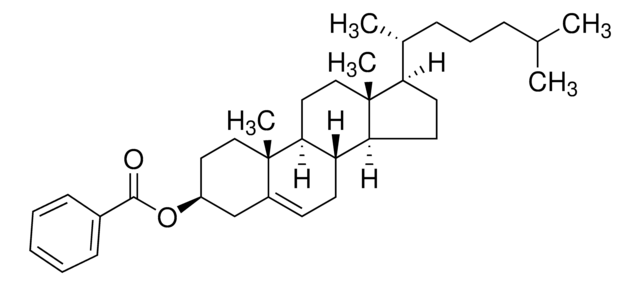23304-U
SPB®-1 Capillary GC Column
L × I.D. 60 m × 0.25 mm, df 3.00 μm
Sign Into View Organizational & Contract Pricing
All Photos(1)
About This Item
UNSPSC Code:
12000000
eCl@ss:
32119290
NACRES:
SB.54
Recommended Products
material
fused silica
agency
meets requirements for USP G1, G2, and G9
parameter
-60-300 °C temperature (isothermal or programmed)
Beta value
21
df
3.00 μm
technique(s)
gas chromatography (GC): suitable
L × I.D.
60 m × 0.25 mm
matrix active group
Bonded; poly(dimethyl siloxane) phase
column type
capillary non-polar
Looking for similar products? Visit Product Comparison Guide
General description
Application: This column is often used for traditional general purpose applications, where a non-polar column is required. Analytes will be separated primarily according to boiling point.
USP Code: This column meets USP G1, G2, and G9 requirements.
Phase:
USP Code: This column meets USP G1, G2, and G9 requirements.
Phase:
- Bonded
- Poly(dimethyl siloxane)
- ≤0.32 mm I.D., <2 μm: -60 °C to 320 °C (isothermal or programmed)
- ≤0.32 mm I.D., ≥2 μm: -60 °C to 300 °C (isothermal or programmed)
- ≥0.53 mm I.D., <2 μm: -60 °C to 300 °C (isothermal) or 320 °C (programmed)
- ≥0.53 mm I.D., ≥2 μm: -60 °C to 260 °C (isothermal) or 280 °C (programmed)
Application
SPB®-1 capillary GC column may be used for herbicide determination using In-tube Solid-phase microextraction (SPME).
Other Notes
We offer a variety of chromatography accessories including analytical syringes
Legal Information
SPB is a registered trademark of Merck KGaA, Darmstadt, Germany
Choose from one of the most recent versions:
Already Own This Product?
Find documentation for the products that you have recently purchased in the Document Library.
Sachin P Bachate et al.
Applied microbiology and biotechnology, 93(5), 2135-2145 (2011-10-11)
Two heterotrophic As(III)-oxidizing bacteria, SPB-24 and SPB-31 were isolated from garden soil. Based on 16S rRNA gene sequence analysis, strain SPB-24 was closely related to genus Bordetella, and strain SPB-31 was most closely related to genus Achromobacter. Both strains exhibited
L J Krutz et al.
Journal of chromatography. A, 999(1-2), 103-121 (2003-07-30)
Liquid-liquid extraction or solid-phase extraction followed by gas chromatography (GC) or high-performance liquid chromatography are traditional herbicide residue determination methods for environmental samples. Solid-phase microextraction (SPME) is a solventless, fast, and sensitive alternative herbicide residue extraction method that can be
Protocols
Developing a Quantitative SPME Method
Chromatograms
suitable for GC, application for air monitoringOur team of scientists has experience in all areas of research including Life Science, Material Science, Chemical Synthesis, Chromatography, Analytical and many others.
Contact Technical Service








